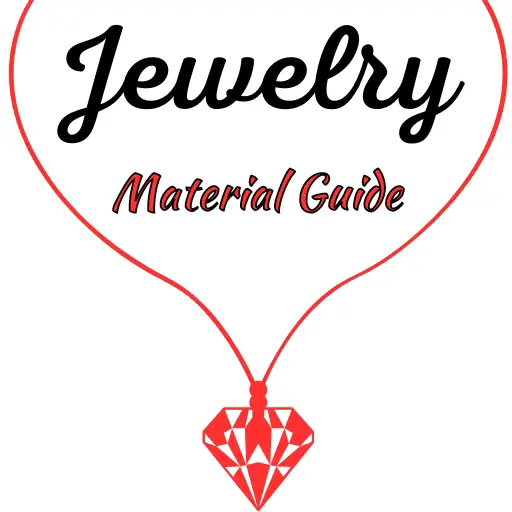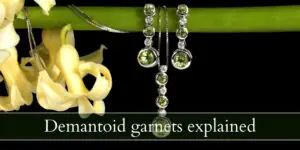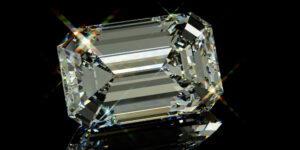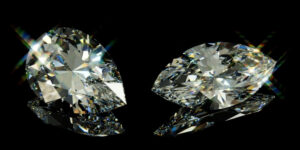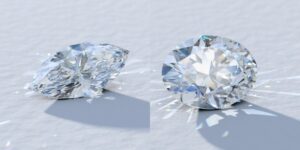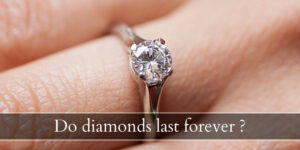Looking for a squarish center diamond for your engagement ring ? You’re probably looking at princess cuts and cushion cuts and would appreciate a comparison between the two. These are two of the most common square cuts and they’re both beautiful in their own way.
So let’s compare the two and see which would work best for your ring.
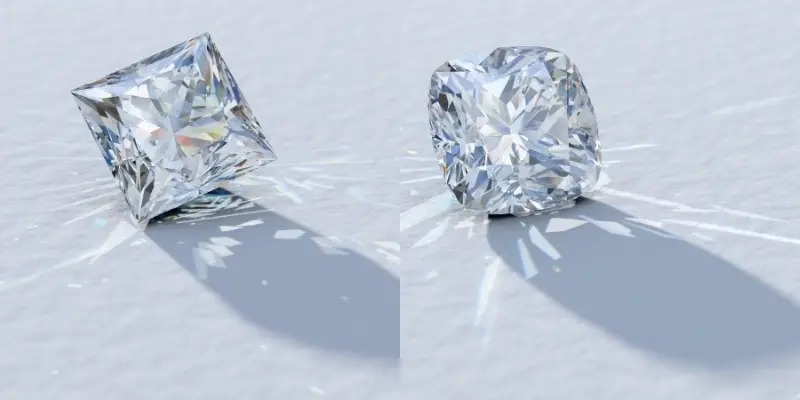
Princess vs cushion cut
Princess cuts have more of a crushed ice look while cushion cuts have more traditional, wider facets so they have more fire while princess cuts have more brilliance. There is a difference in the corners and edges too, with princess cuts showing sharp 90 degree corners with straight edges and cushion cuts showing rounded corners with sometimes rounded edges as well.
Cushion cuts tend to work better with a halo setting if that’s what you want, while princess cuts work better as solitaires.
What is princess cut ?
The princess cut is a square shape diamond, most of the time with a perfect 1:1 ratio in terms of width to length. It has a square top with wide triangle facets on the crown, and very thin chevron facets on the pavilion, forming an X with several layers or shadows. There are two main types of princess cut, the French corner and the bezel corner, and both refer to the difference in the crown corners.

The princess cut is actually derived from the old French cut, and as time went on many names have been cited as possible inventors and contributors to the princess cut we know today. They are:
- Basil Watermeyer, who invented the Barion cut and it is strikingly similar to the current princess cut
- Arpad Nagy, who invented the square cut diamond, very similar to the princess cut
- Ambar Diamonds, who patented the Quadrillion cut
These are, in fact, versions of what we call the princess cut. All diamond cutting styles have different variations and all of them are patented. And, more and more variations are comin up.
But the overarching theme of any princess cut style if the 3 or 4 chevron layers on the pavilion, the wide triangles on the crown (like a round brilliant) and the sharp 90 degree corners on the girdle. Because of this, you may sometimes find this labeled as ‘square cut diamond’ or ‘square cut modified brilliant’.
Read also: Fancy Cut Diamonds Explained
What is cushion cut ?
The cushion cut is a squarish diamond shape, most notable for its rounded corners, and sometimes rounded sides as well. In this regard it is similar to a pillow or cushion when viewed face-up. The table features triangles, diamonds, and beveled or cut corners. The pavilion tends to have a 4 or 8 point star shape, with triangle facets between them.
Most of the time the cushion cut has a 1.10:1 ratio, which is still almost a square. But you can easily find elongated cushion cuts that are 1.30:1 and they will look gorgeous. And there are plenty of cushion cut variations so you will have plenty to choose from.

The cushion cut is derived from the old mine cut, and it was popular for a couple of centuries, until the round brilliant was perfected in the early 1900s. Currently the two most popular cushion cuts are the cushion brilliant (wider facets) and the modified cushion crushed ice (more, thinner facets).
Now let’s compare the cushion cuts and princess cuts so you can notice the key differences.
1. Princess cut is more angular, modern than cushion cut
The princess cut, despite its name, is more of a modern look than the cushion cut. This is mostly due to its very angular look, the same way an emerald or baguette looks more modern and angular than an oval cut.
The princess has many, many facets on the pavilion and they are at an angle, but also (mostly) parallel to each other. This is easiest to see when viewing the diamond face-up, or from the side.
The cushion cut has a more organic, soft look to it since it does not have any sharp corners and can even be a bit rounded at the edges too. Because of this is can easily fit into a vintage design, or even Victorian-inspired ones. if Art Deco is more your thing, the princess cut is better than the cushion cut, though we recommend looking at emerald cuts or Asschers.
2. Cushion cut has a rounded corner, princess has sharp corners
The corners of these two diamond cut styles are one of their key features, and possibly the easiest way to tell them apart. Cushion cuts always, always have rounded corners. Not cut, not beveled, rounded. If you like the sharp look of a princess cut corner, you can ask for bigger prongs on your cushion cut, so you have the illusion of a sharp corner.
Princess cuts have perfectly square, 90 degree corners that are immediately recognizable among any diamonds. The only other diamond with such corners is the baguette, which has far less facets than a princess.
This is actually a defining feature of the princess cut, and it’s a bit of a gamble. Why ? Diamonds are incredibly tough and do not scratch, but they can split or fracture along points that are too sharp, like the princess’ square corners. This is always mitigated by setting the prongs directly over the sharp corners, thus protecting them from any damage.
This is the same reason emerald cuts, Asschers, and radiants all have their corners cut.
3. Princess offers more brilliance, cushion more fire
Due to the way these diamonds are cut, they have slightly different faceting, in that the cushion cut has (traditionally) larger facets than the princess. This results in comparatively more fire than the princess. Meanwhile the princess cut shows more brilliance than the cushion cut. Of course, both show scintillation (fire+brilliance) but they have a slightly different ratio.
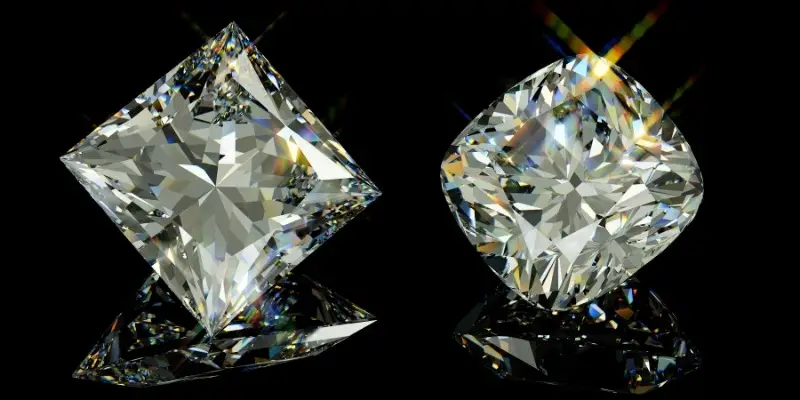
This is easiest to see in very strong lighting, such as direct afternoon light, or spotlights. Overhead office lighting, cloudy skies, or a shaded area will provide only brilliance. So the store lights (spotlights) and direct sunlight are your best bet at getting a realistic comparison between the two.
If you’re very much in love with the look of a cushion cut (the shape of it) and eve the fact that you can get it a bit elongated, but like the facets of a princess cut, you can reach a happy medium. There are some cushion cuts that are called crushed ice, and they have more facets on the pavilion. This results in the light broken into more pieces, smaller, thus resembling crushed ice, more like a princess cut.
4. Cushion cuts may appear smaller than princess cuts
Precisely because of the extra brilliance (white light) in a princess cut, these diamonds tend to appear larger than cushion cuts when when they are of the same carat weight. Remember, carats only tell you how much a diamond weighs, not how wide and long it is.
The industry standard is set to round brilliants, which have an ideal cut and ratio as to how shallow, tall, wide the shape can be. For any other cut (so not a round cut) this ratio is thrown off completely and you cannot go by 1 carat = x millimeters.
Overall though, you should remember that cushions tend to look a bit smaller than princess cuts when put side-by-side.
5. Princess cuts are better as solitaires, cushions work great with halos
Perhaps this is a personal opinion, perhaps it’s science, we don’t know. But princess cuts tend to work best when NOT in a halo. They have a beautiful shape and any halo you would add should be incredibly thin (so very tiny diamonds), and the band should be plain, or a pave with very small diamonds as well.
Cushion cuts work well with halos, perhaps because of those generally lager facets that don’t make it seem all a blur of sparkly diamonds.
6. Cushion cuts are more common and varied than princess cuts
When deciding which diamond cut you’d like, you also have to consider how realistic it is to actually find one you like. You could be looking at 5-10 different diamonds and not feel like any of them is good enough. Cushion cuts are quite popular and in demand, so you will have plenty to choose from in terms of clarity, color grade, carat size, and exact variation on the style.
Princess cuts are also popular, but not as much as the cushion cut, and they’re less varied so you might have to look at a few more than with a cushion. A nice point about princess cuts is that due to their many, thin facets on the pavilion they can hide small inclusions a little bit better than a cushion. Both can hide them, it’s just that princess cuts are a bit better for this.
In the end both diamond cuts are very lively, very sparkly cuts that are sure to make people want to admire your ring. Which you choose is ultimately up to you can your eyes. So we recommend walking into a jewelry shop and seeing a princess and a cushion of similar carat weight. See how they more, how they catch the light, and remember that some jewelers let you try them on in a fake setting so you’d get an idea of how they’d be on your hand.

I’m the main author for jewelrymaterialguide.com. I started this site after we did tons of research before our wedding and noticed that there is information about rings, jewelry, and so on that is really hard to find on the internet.
